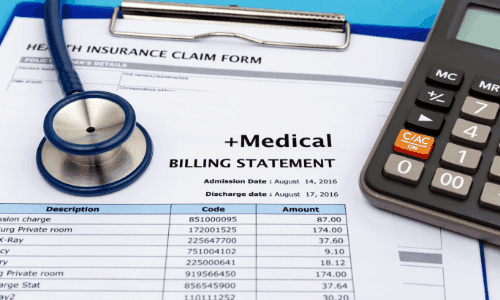No one leaves their home expecting to be in a pedestrian accident. But each year, more than 130,000 pedestrians are treated in emergency departments for non-fatal, crash-related injuries. Additionally, traffic accidents kill 6,000 pedestrians each year, equating to approximately one death every 88 minutes.
No settlement amount can provide enough justice to repair a life shattered by a pedestrian accident. However, filing a lawsuit can provide accident victims and their loved ones with much-needed closure. A pedestrian personal injury case also allows victims to seek compensation for medical expenses, pain and suffering, and lost wages.
Have you been hit by a car in a pedestrian accident? If so, consider how a personal injury lawyer can help you and your loved ones receive the settlement you deserve.
Pedestrian Rights and Duties in Arizona
Much like in the rest of the U.S., Arizona generally shares the same right-of-way rules for pedestrians on sidewalks, crosswalks, and public roads. These rules state that cars must yield to pedestrians on crosswalks, sidewalks, parking lots, and other roadways. In other words, pedestrians have the right of way. With this right of way comes several duties, including:
- The duty to obey traffic and crosswalk signals
- The duty to cross the road at designated crosswalks
- The duty to use the sidewalk whenever possible and not walk immediately in the roadway
- The duty to walk along the shoulder of the road, facing traffic, whenever there is not a sidewalk
- The duty to pay attention and walk carefully whenever they have the right of way
- The duty to remain aware of their surroundings and take all necessary precautions to remain safe
If a pedestrian follows all duties and responsibilities but is injured in a traffic accident, the motorist may be responsible for the pedestrian’s injuries.
Common Causes of a Pedestrian Accident
Though there are plenty of pedestrians struck on country roads, most pedestrian accidents occur in urban areas. Busy city streets have more injuries and fatalities, and the majority of fatalities occur at night. Moreover, 74 percent of pedestrian-vehicle crashes occur where no traffic controls, such as lights or signage, exist.
Studies show cars making left turns hit three times as many pedestrians as cars making right turns. When making a left turn, the driver is looking straight ahead at oncoming traffic. They’re usually not looking to the left (where they’re turning). Typically, the pedestrian is also looking straight ahead where they’re walking. They’re not usually looking to their right (where the car is coming from). Because both the pedestrian and the motorist are looking straight ahead, the two do not see one another.

While there are several common causes of a pedestrian accident, they boil down to two categories: motorist causes and pedestrian causes.
Motorist Causes for Pedestrian Accidents
A motorist is typically driving more than a ton of pure metal and steel, so when they cause a pedestrian accident, the results can be catastrophic.The most common cause of motorcycle accidents, truck accidents, and auto accidents with a pedestrian is drunk driving.
Nearly half of all fatal pedestrian accidents involve an alcohol-impaired driver.
Other common motorist causes for pedestrian accidents include:
- Speeding
- Bad weather
- Distracted driving
- Failing to obey traffic signals
- Failing to yield to a pedestrian
- Pedestrian Causes for Car Accidents
Pedestrians have equal responsibility when sharing the road with motorists. As such, they must safely conduct themselves when walking along sidewalks, crosswalks, parking lots, and roadways. When a pedestrian neglects their duties, they put themselves at risk of causing an accident.
Common pedestrian causes for car accidents include:
- Intoxication
- Ignoring a traffic signal
- Walking in prohibited areas
- Failing to walk on the sidewalk
- Wearing dark clothing at night
- Jaywalking (walking outside of a crosswalk)
Common Injuries for Pedestrians Hit by Cars
Pedestrians struck by a vehicle typically suffer injuries to their pelvis, abdomen, chest, extremities, and head. However, pedestrians can also suffer what are called secondary injuries. These are injuries caused by being lifted into the air or thrown across the road.
Several factors contribute to the severity of a pedestrian’s injuries. Some of these factors include the driver’s speed at the time of the crash, the type of vehicle, and the pedestrian’s age and health.
The most common injuries for a pedestrian hit by a car include pelvic injuries, internal damage, and head trauma, as well as neck, shoulder, and spinal cord injuries.
Pelvic Injuries
During a pedestrian accident, the lower body is most likely to come into contact with the vehicle first. In most cases, the force of impact causes pelvic injuries, such as fractures, lacerations, and trauma to the ligaments and muscles.
The vehicle’s hood design is a contributing factor to the severity of lower-body injuries. For instance, a large, domed hood could cause more damage to the lower body than a shorter, sleeker hood.
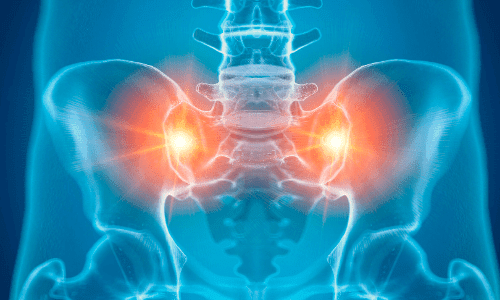
Internal Injuries
The torso and abdomen can sustain damage in a pedestrian accident, especially if the striking vehicle was a truck or large sedan. The force of impact can break one or multiple ribs, which can cause internal bleeding. Broken ribs can also puncture organs like the liver, kidney, and stomach, causing severe damage.
Head Trauma
Anytime head trauma is involved in a collision, the stakes are extremely high. Damage can range from a minor concussion to a traumatic brain injury (TBI) or brain swelling. Likewise, if the head strikes the vehicle or the pavement, skull damage, such as a fracture, can occur.
Neck Injuries
The upper part of the body is likely to come into contact with the vehicle second. When this happens, the neck, face, and head can strike the windshield or hood of the vehicle, causing serious neck injury. Common examples of neck injuries include sprains and strains, such as whiplash and jaw fractures.
Shoulder Injuries
It’s not uncommon for accident victims to raise their hands over their face or head to protect themselves during impact. When the upper body comes into contact with the vehicle, the shoulders can sustain numerous injuries. Shoulder displacement, vertebrae trauma, and fractures are some of the most frequently experienced shoulder injuries.
Spinal Cord Injuries
Spinal cord injuries can have life-changing consequences. Because the spinal cord is responsible for transmitting signals between the brain and the rest of the body, even minor damage can be devastating. In other areas of the spine, bulging or herniated discs, pinched nerves, and sprains can occur.
Wrongful Death
In the most severe cases, pedestrians struck by a motor vehicle may pass away due to their injuries. Wrongful death cases occur when the pedestrian is killed due to the driver’s negligence, such as speeding or driving drunk.
What to Do After a Pedestrian Accident
The first moments after a pedestrian accident are frightening and disorientating. If you can, dial 911 right away to report the accident and ask for help. Be sure to let the dispatcher know that you’re a pedestrian who has been hit by a car. If you’re not physically able to access your cell phone, ask a bystander or the driver to dial 911 for you.
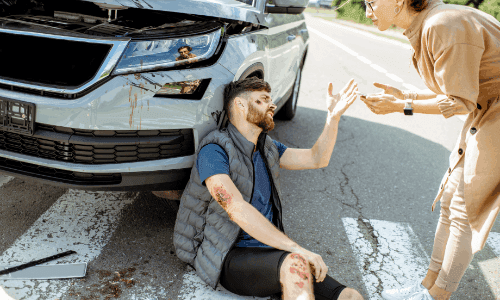
Next, you must do your best to gather whatever evidence is available to you and receive immediate medical attention.
Gather Evidence at the Scene
Accident scenes don’t last long, especially if they’re in the middle of a busy road. Before leaving the scene, do your best to gather any evidence that supports your insurance claim. If you’re unable to move around the scene yourself, call a loved one or ask one of the responding police officers to gather information for you. In most cases, the police officer will be filing a police accident report, so they’ll be collecting evidence either way.
Be sure to ask the driver of the car for all of their contact information, including their full name, address, and home and work phone numbers. Likewise, gather all insurance information necessary to file your claim. Next, record all details about the vehicle that hit you, including:
- Make, model, and year
- License plate number
- Vehicle identification number (VIN)
Owner’s name and contact information, in the case whoever was driving the vehicle is not the vehicle’s legal owner
Lastly, take as many photographs as possible. If you’re unable to take pictures, have a loved one or bystander take pictures for you.
Focus on any damage to the vehicle where it struck your body, the surrounding area and signage, your injuries, and any other details that show what happened at the scene. Whenever possible, ask to record any witness statements, and be sure to include the witness’s name and contact information in the recording.
Seek Immediate Medical Attention
Never refuse medical attention at the scene of the accident. Shock and adrenaline can mask symptoms of severe injuries like brain trauma, as well as delayed injuries such as back pain. Once paramedics arrive, alert them to every symptom you’re experiencing—even if you think it’s mild. If the paramedics want to take you to the hospital, let them.
In case you aren’t taken directly to the hospital after the accident, visit the emergency room, an urgent care center, or your private doctor as soon as possible. Immediate medical attention is crucial to diagnose and document any underlying damage caused by the accident.
Plus, delaying or refusing medical treatment can ultimately harm your injury claim. Without immediate documentation, the insurance company may attempt to deny your claim, arguing that your injuries weren’t caused by the accident.
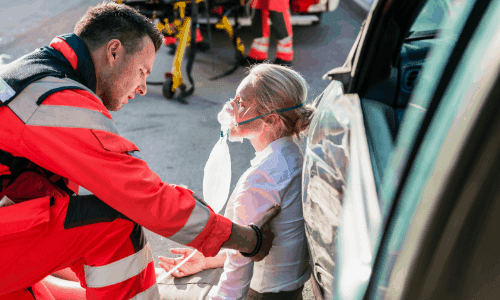
Who is Liable in a Pedestrian Accident Case?
All motorists have a duty of care to obey traffic laws and pay close attention to their surroundings. This is a law that requires all drivers, including motorcyclists, to use common sense and act reasonably and carefully under all circumstances. Drivers who breach their duty of care by ignoring traffic laws or failing to use sound judgment are considered negligent in the eyes of the law.
To prove a driver was liable for your damages, you must be able to prove to the insurance company that the driver was negligent. This negligence must be the direct or proximate cause of your injuries. However, the insurance company may push back, stating that your actions also contributed to the accident. In this case, comparative negligence laws may come into play.
Comparative Negligence in a Pedestrian Accident Case
The state of Arizona uses comparative negligence laws. This means an injured pedestrian can pursue compensation from an at-fault driver, even if the pedestrian was partly responsible for the accident. A pedestrian can be found partly responsible for an accident if they breach their pedestrian duty of care, such as failing to cross at a crosswalk (jaywalking) or ignoring a traffic signal.
Under comparative negligence laws, the pedestrian’s compensation is reduced by their percentage of fault for the accident. Consider a case where a pedestrian is found to be 20 percent at fault. If the pedestrian’s total compensation equaled $40,000, they would receive a final settlement amount of $32,000—their total compensation minus 20 percent.
Seeking the Help of a Pedestrian Accident Attorney to Prove Negligence
Proving negligence is no easy feat. If you’re a pedestrian who has been hit by a car, you’ll need to build a solid case. A successful personal injury claim requires well-organized paperwork and documentation of all damages to establish negligence. This documentation can help prove the driver breached their duty of care and support the value of your claim. While you’re healing from your injuries, you should consider seeking the help of a pedestrian accident attorney.
A strong attorney-client relationship can help streamline the claims process, removing the stress of the case from your shoulders. Plus, your attorney can gather the necessary materials to support your case, so you can focus on recovery.
Necessary materials to prove negligence in a pedestrian accident case include a police accident report, witness statements, and medical documentation.
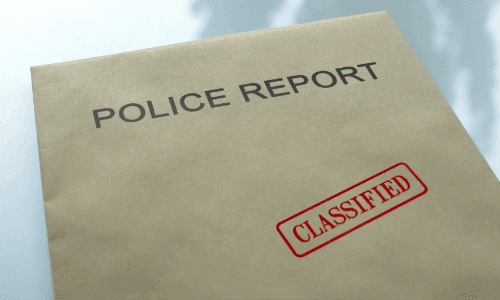
Police Report
If the police were called to the accident scene, there should be an official police accident report on file. A police report includes the time of the accident, weather and roadway conditions, a simple diagram of the accident scene, the responding officer’s opinion of fault, and any collected witness statements. If any citations were issued to the motorist, such as speeding or drunk driving, these items are also included in the report. This information carries a lot of weight with the insurance company, as it’s a credible, unbiased version of the events.
Witness Statements
Witness statements are invaluable evidence, whether they come from the police report or your independent investigation at the accident scene. During the discovery phase of your accident case, witness statements are used to form a basis of how the crash unfolded. A pedestrian accident attorney can also reconstruct the accident scene using expert witnesses to help support your case.
Medical Records and Bills
Your medical records are crucial evidence, especially if you were taken to the emergency room. These documents tie your medical expenses directly to the pedestrian accident. Copies of your medical bills, such as an ambulance ride, surgery, or medications, can verify your medical treatment and prove the cost of your injuries. The total cost of your medical expenses is a large part of calculating your settlement value, so these documents must be in order.
Lost Wages
Being involved in a serious pedestrian accident can put you out of work for the foreseeable future. Your personal injury attorney can contact your employer to provide a written statement of the time you lost from work, as well as sick leave or vacation days you were forced to take during your recovery. Lost opportunities for overtime pay, tips, and gratuity can also be included in lost wages.
What Are the Types of Damages in a Pedestrian Injury Claim?
Before diving into the pedestrian hit by car settlement amounts, it’s important to understand the types of damages that can be included in an injury claim. There are two types of damages in most personal injury cases: special and general.
What are Special Damages?
Special damages are also referred to as “economic damages” in personal injury law. These types of damages can be calculated to the exact dollar amount. Typically, an attorney utilizes bills, statements, or receipts to price special damages.
Examples of special damages in a pedestrian injury claim include:
- Medical bills
- Future medical treatment, including home care
- Lost wages
- Lost earning capacity
What are General Damages?
Unlike special damages, general damages are not capable of exact calculation. These types of damages are referred to as “non-economic” because they don’t have a price tag. Instead, their value is decided based on a sliding scale used by insurance companies.
Examples of general damages in a pedestrian injury claim include:
- Long-term disability or paralysis
- Loss of enjoyment of life
- Pain and suffering
- Emotional trauma
- Disfigurement
Additionally, a motorist can face monetary penalties for gross negligence, which are then awarded as part of the total settlement.
What is the Average Settlement for a Pedestrian Hit By a Car?
The average settlement amount awarded to a pedestrian hit by a car varies wildly. Settlement amounts depend on many factors, including the severity of the injuries and if the pedestrian was found to be at fault. Generally speaking, the average injury settlement for a pedestrian hit by a car can range from $15,000 to $75,000 for minor injuries, like whiplash or a broken bone. The settlement payout can increase to $500,000 or upwards of $1 million for more serious injuries, like spinal cord damage or a traumatic brain injury.
Likewise, the settlement payout will vary depending on whether the pedestrian settles through the driver’s insurance company or a personal injury lawsuit. In some cases, the driver will not have insurance. The pedestrian may have to visit their insurance policy regarding uninsured motorist coverage. In other cases, the driver will not have enough auto insurance coverage to compensate for all of the damages. In this case, the pedestrian’s personal injury attorney will file a lawsuit against the defendant driver.
Consider these recent pedestrian accident settlements, but do consult with an injury attorney to best estimate your unique settlement amount.
$13,500,000 Settlement for Pedestrian Hit by Car
A 24-year-old woman was awarded a $13.5 million settlement after she was struck by a company-owned car driven by a regional pharmaceutical sales representative. The driver was traveling southbound and claimed to have only seen the victim in the southbound lane seconds before impact. The driver argued that poor lighting and the victim’s dark clothing made it impossible to see the victim.
The motorist also claimed to be driving 25 to 30 mph. However, accident investigators discovered she was driving closer to 50 mph at the time of the accident. The high speed of travel caused the victim’s catastrophic injuries, including blunt force trauma to the head, body, and limbs.
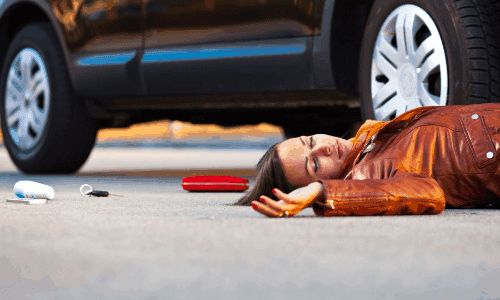
She suffered a traumatic brain injury to the left frontal lobe and a subdural hematoma. The pedestrian also experienced a ruptured diaphragm, a lacerated spleen, and multiple fractures. Her injuries were so severe, she was unable to testify, and three medical doctors testified in her place.
$527,000 Settlement for Each Child in Wrongful Death Suit
A mother of four was taking an early morning walk when she was struck and killed by a 19-year-old drunk driver. She was struck with such force she was dismembered, yet the driver fled the scene without attempting to help. The driver was later found at his home, several miles from where the accident occurred.
The motorist was not the legal owner of the vehicle. Investigators discovered that the owner knew the young driver was drunk and still permitted him to drive the car. Under wrongful death law, the pedestrian’s son, Manuel, sued the driver and the owner of the vehicle for gross negligence. Manuel and his three siblings were each awarded $527,000, for a total of $2,108,000.
$255,000 Pedestrian Hit by Car Insurance Settlement
After being struck by an at-fault driver, another pedestrian was awarded a $255,000 insurance policy settlement plus medical payments.
The driver was turning left, observing oncoming traffic, while the pedestrian was crossing the road. The pedestrian suffered a traumatic brain injury as well as multiple lacerations.
The driver severely broke his duty of care by not observing the crosswalk before turning. Because of this, he was found liable for the pedestrian’s injuries. The pedestrian was awarded a $255,000 settlement as well as future medical treatments.
Seek a Free Consultation with a Pedestrian Accident Attorney
If you’ve been injured in a pedestrian accident, you deserve justice. Seek a law firm knowledgeable in pedestrian law to file a personal injury case for your damages. Contact a pedestrian accident lawyer today for your free consultation. Though no amount of compensation can return you to your pre-accident life, a personal injury lawyer can ensure you receive the optimal pedestrian accident settlement amount.


